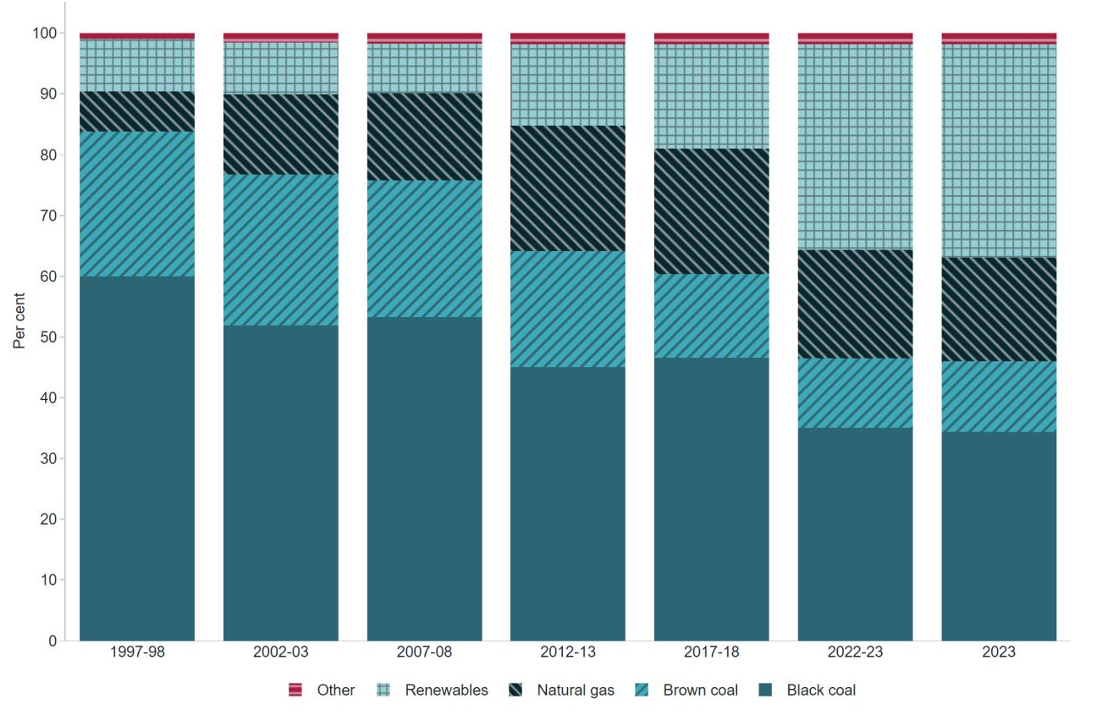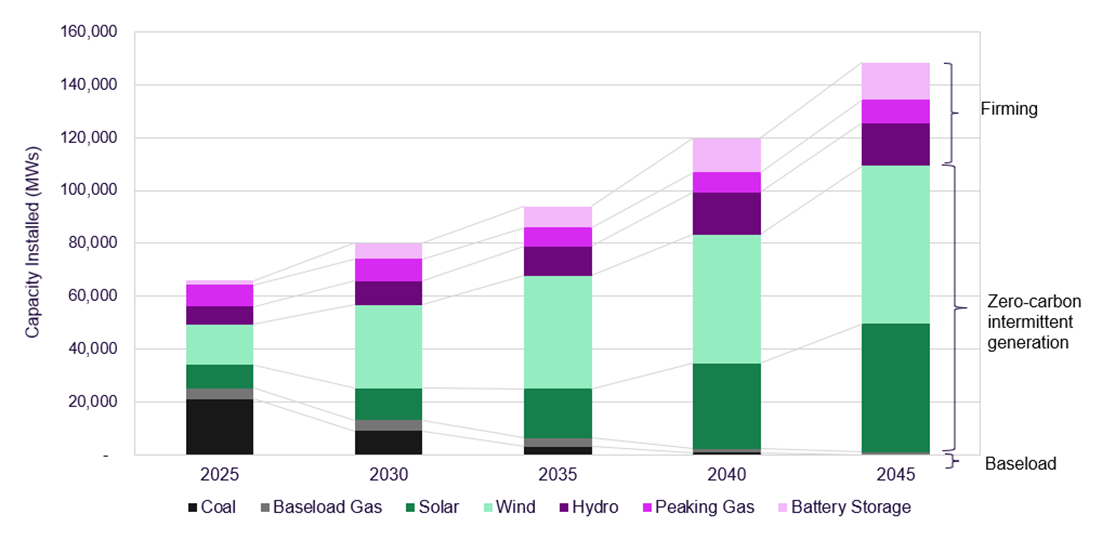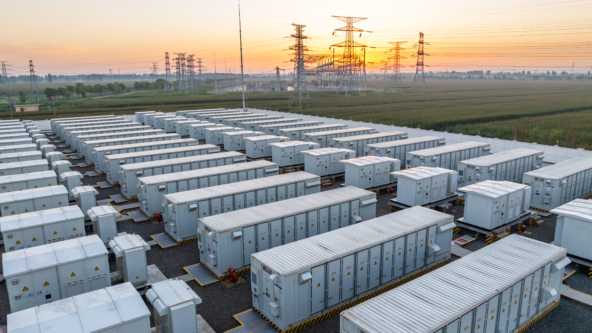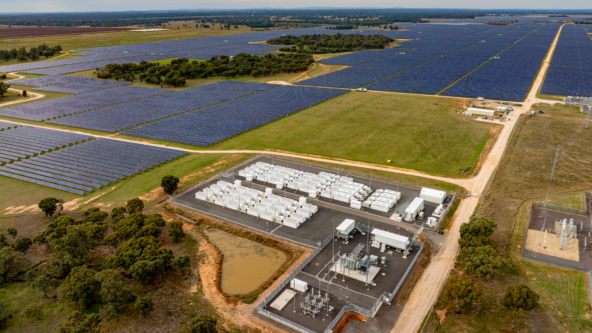Australia’s electricity sector is experiencing one of the most significant transformations in its history, driven by the shift from fossil fuels to renewable energy sources. Today, renewable energy sources account for around 40% of generation in the country’s largest electricity market, the National Electricity Market (NEM) – a remarkable increase from less than 1% in 2000.
As a leading renewable energy developer and fund manager, Octopus Australia is at the forefront of this energy transition, leveraging its expertise to invest in and develop essential renewable energy assets across Australia.
To understand this evolution and the factors shaping the future energy landscape, it’s helpful to reflect on the history of Australia’s electricity generation.
The beginning of Power Stations in Australia
Australia’s first utility-scale power station was developed 100 years ago in 1924, when the State Electricity Commission of Victoria (SECV) built the 50MW Yallourn Power Station. This allowed electricity generated from the Latrobe Valley to be transmitted roughly 140 kilometres to Melbourne.
Between 1924 and 1998, over 100 utility scale power stations were built across the country. These were predominantly coal-fired power stations developed near major coal deposits, with new transmission lines connecting them to major cities. Hydropower provided the only major source of renewable generation during this time, particularly the Snowy Mountains Hydro Scheme.
As Australia developed its natural gas deposits in the 1960s, there was a gradual introduction of gas-fired power stations in the NEM. Natural gas has the advantage of turning on quickly and for short amounts of time, notably during periods of high demand.
Up until 1998, Australia’s electricity grids were state-based and operated independently.
The introduction of the National Electricity Market (NEM)
The NEM commenced operation in December 1998 connecting five regional market jurisdictions – QLD, NSW (including ACT), VIC, SA and TAS, with WA and the NT operating their own independent power systems. The NEM is currently the largest interconnected system in the world by geographic spread.
The energy technology mix has transformed significantly since the inception of the NEM. The below graph highlights the substantial increase in the proportion of renewable generation, initially solely stemming from Hydropower, as well as the decrease in total coal generation from ~84% to ~46% since the NEM’s establishment.

Source: Australian Government, Australian Energy Update 2024
Key drivers of the NEM’s energy mix evolution
There are currently 16 operational coal-fired power stations remaining in the NEM, mostly built in the second half of the 20th century. The majority of these are approaching the end of their economic life and are planned to be decommissioned over the next 10-15 years. They will need to be replaced with new generation.
Australia’s national science agency, the CSIRO, has found that low emissions renewable energy technologies, primarily wind and solar, supported by battery storage, are the lowest cost forms of new generation to replace the retiring coal fleet. This also accounts for the cost of new transmission.
This view has also been taken by the majority of Governments at federal and state level, who have implemented policies aimed at transforming the electricity system to lower carbon emissions and limit the effects of climate change. The Federal Government’s ‘Powering Australia Plan’ targets 82% renewable generation across the NEM by 2030, as part of Australia’s target to reduce emissions by 43% (below 2005 levels) by 2030, and achieve net-zero emissions by 2050.
The states have also introduced their own policies, such as the NSW Electricity Infrastructure Roadmap and Queensland Energy and Jobs Plan, to encourage the roll out of renewable energy infrastructure within their jurisdictions.
These drivers spanning both the private and public sectors account for the fundamental shift in the Australian electricity market’s transition from traditional fossil fuels to renewable generation.
The future of Australia’s energy mix
As our energy system moves away from traditional ‘baseload’ generation towards a model where variable renewables provide the majority of generation, firming strategies become critical to maintain reliability and stability.
‘Firming’ technologies are used to ensure a reliable and consistent power supply by ‘firming’ the variability of renewable energy. These technologies include battery storage, hydropower and peaking gas.

Source: Octopus Australia
As a renewable energy developer and fund manager, Octopus Australia is strategically positioned to take advantage of these renewable tailwinds in the electricity market. With in-house expertise across energy markets, development, grid, engineering and investment, Octopus Australia’s strategy spans various technologies and jurisdictions.
Through building an integrated portfolio of wind, solar and battery storage assets in Australia, Octopus Australia offers investors exposure to these critical technologies across each stage of the infrastructure lifecycle: development, construction and ongoing operations. This presents a unique offering to investors wanting to be a part of Australia’s energy transition.


